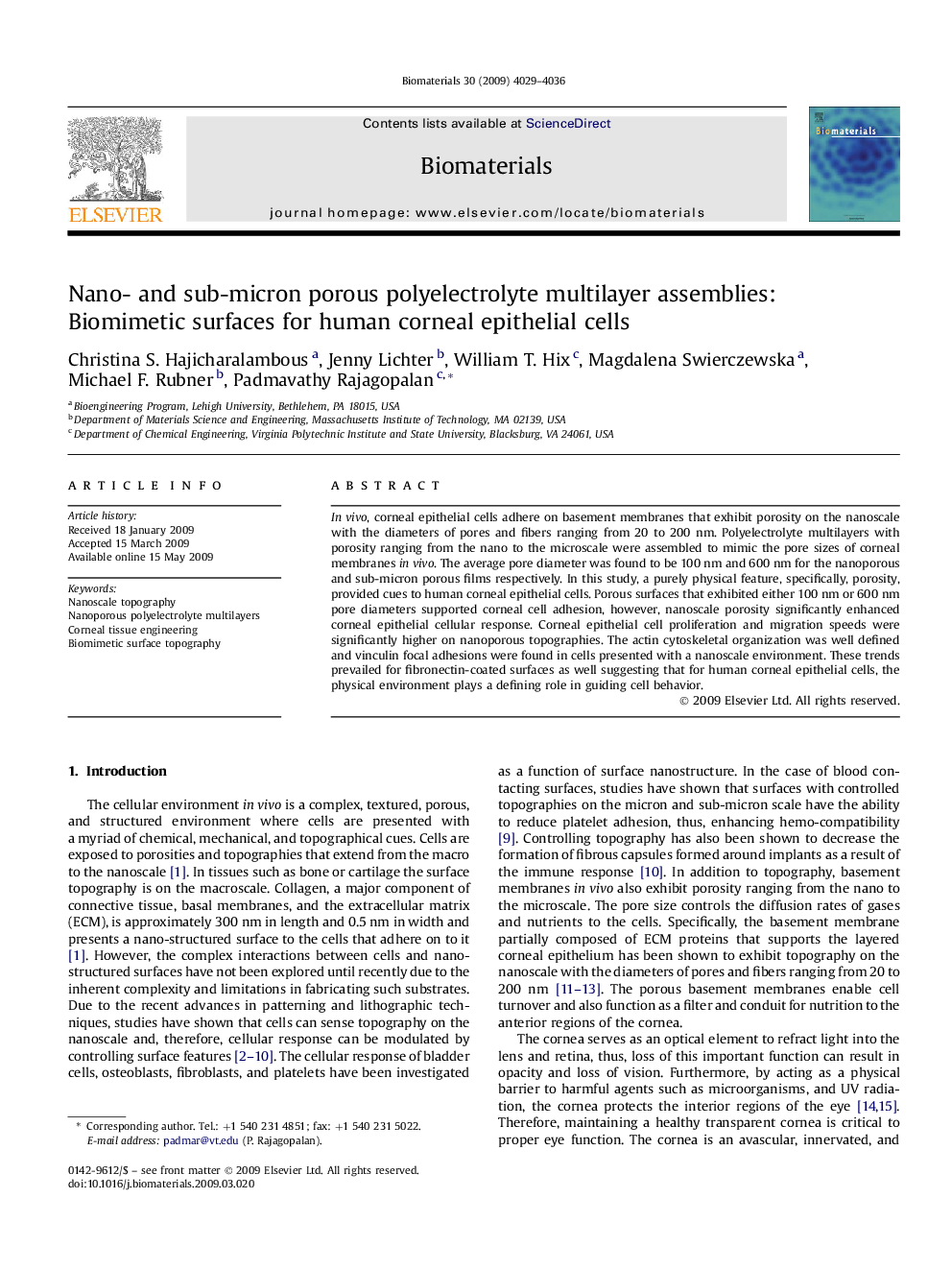| Article ID | Journal | Published Year | Pages | File Type |
|---|---|---|---|---|
| 8809 | Biomaterials | 2009 | 8 Pages |
In vivo, corneal epithelial cells adhere on basement membranes that exhibit porosity on the nanoscale with the diameters of pores and fibers ranging from 20 to 200 nm. Polyelectrolyte multilayers with porosity ranging from the nano to the microscale were assembled to mimic the pore sizes of corneal membranes in vivo. The average pore diameter was found to be 100 nm and 600 nm for the nanoporous and sub-micron porous films respectively. In this study, a purely physical feature, specifically, porosity, provided cues to human corneal epithelial cells. Porous surfaces that exhibited either 100 nm or 600 nm pore diameters supported corneal cell adhesion, however, nanoscale porosity significantly enhanced corneal epithelial cellular response. Corneal epithelial cell proliferation and migration speeds were significantly higher on nanoporous topographies. The actin cytoskeletal organization was well defined and vinculin focal adhesions were found in cells presented with a nanoscale environment. These trends prevailed for fibronectin-coated surfaces as well suggesting that for human corneal epithelial cells, the physical environment plays a defining role in guiding cell behavior.
